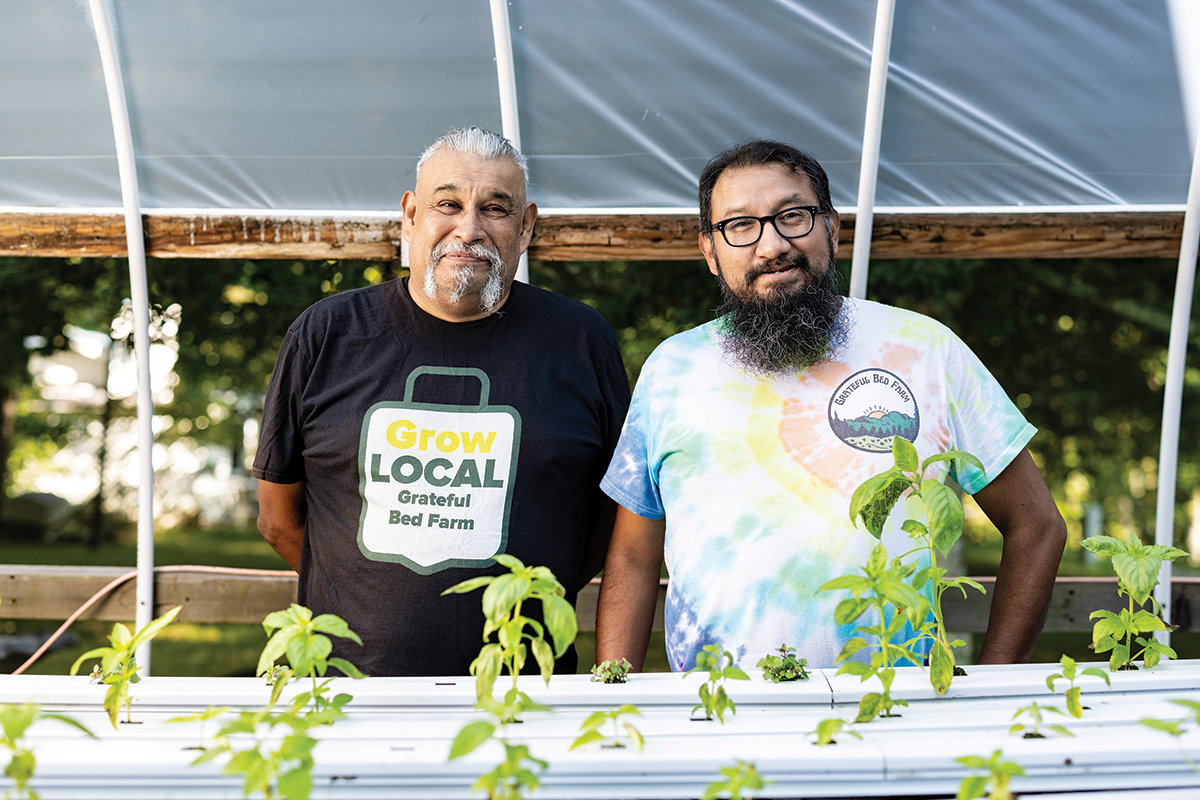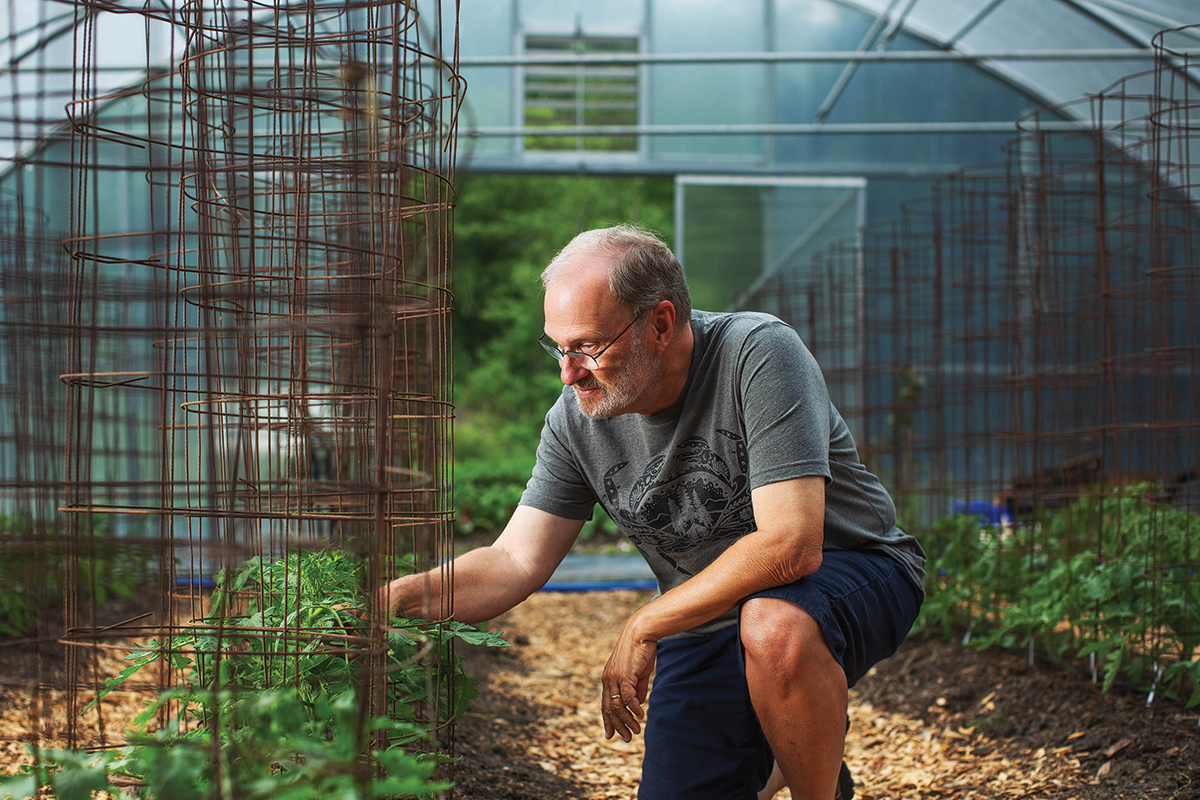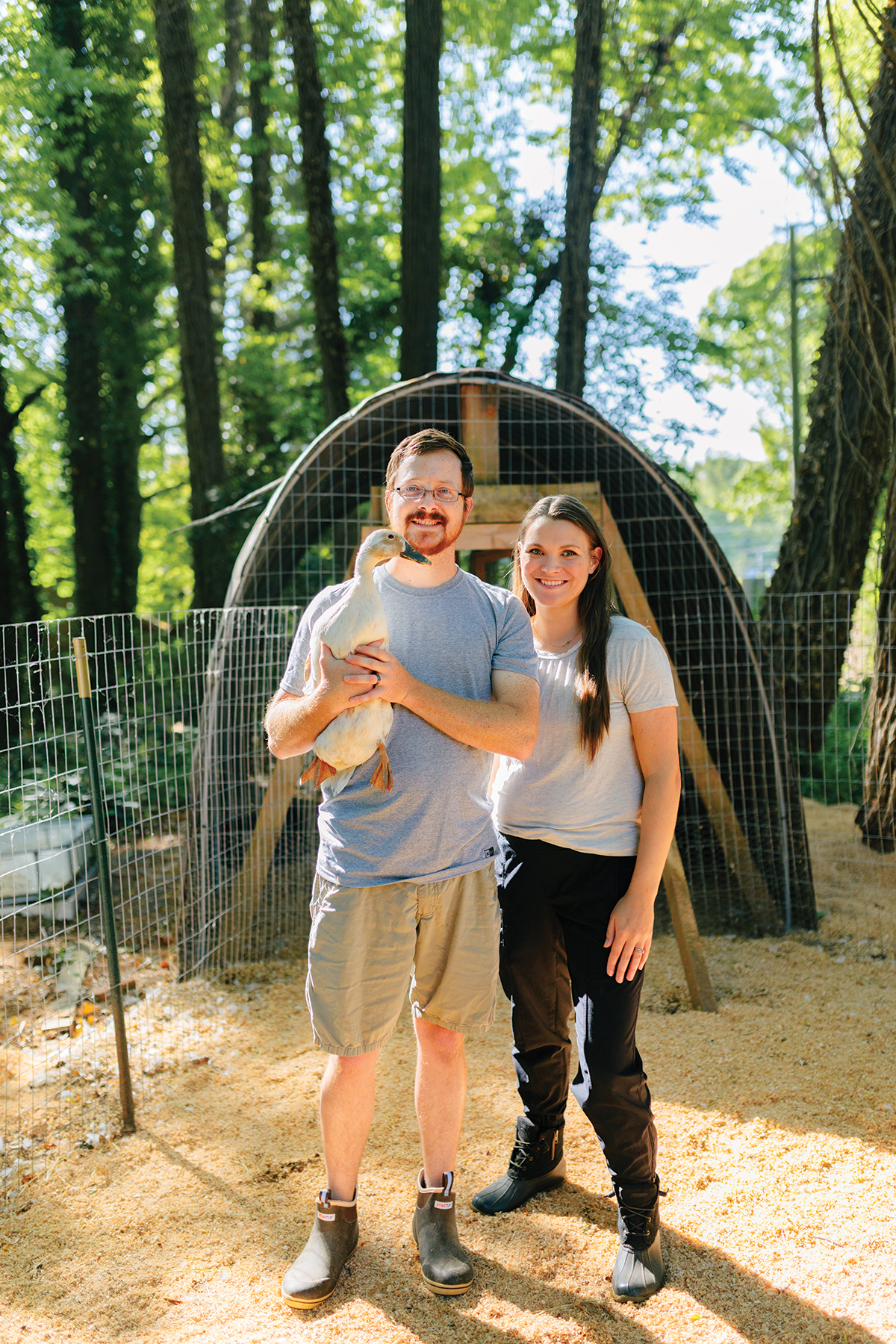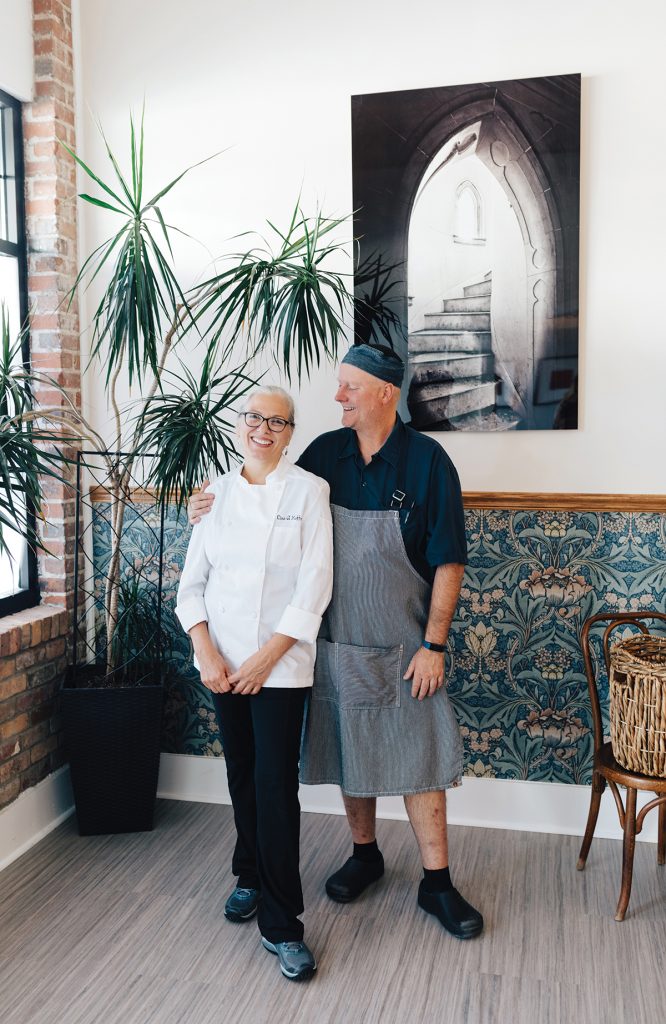Microgreens flourish in a niche market

LITTLE PLANTS, BIG PLANS
Andrew Rodriguez, right, with his brother Michael, knew he could grow better microgreens than he saw in the store.
Photo by Jack Robert
Andrew Rodriguez started a whole business to change one assumption.
“When people think microgreens, they automatically think of sprouts,” says Rodriguez, who founded Grateful Bed Farms in Henderson County.
Not so: Sprouts are hydroponic seeds that have just germinated, while microgreens, grown in soil, are sometimes called the “toddler” version of mature vegetables — broccoli, red kale, spinach, etc. Using that perspective, so-called “baby greens” are more like the teenaged version of the grown vegetable.
But microgreens are acknowledged as the most nutrient-packed and flavorful of the three choices.

Microgreens are known for their extreme nutrient density.
Photo by Jack Robert
“Every time I go into a grocery store and look in the produce aisle for microgreens, there’s always this small container of wilted little greens that look sad,” laughs Rodriguez. “I wanted to get away from that and set myself apart from it.”
Originally from Ohio, Rodriguez spent 12 years working in big-box greenhouses — something that fueled his passion for plants, but tore at his head and heart a little. He says, “You end up spraying so many chemicals and doing bad stuff. I just got burned out on it.”

Purple Radish Greens (top right) are a spicy favorite at Grateful Bed Farm.
Photo by Jack Robert
Having visited Western North Carolina a handful of times on vacation, he decided to quit his job and move to the region, where he tested out a number of opportunities in agritourism before he got a job as a truck driver for Boar’s Head and eventually bought a house in Henderson County. He built grow rooms and a greenhouse on his property and started Grateful Bed Farm with his brother Michael about three years ago. But just as they were hitting the ground running, the pandemic struck, shutting everything down. Despite the sweeping restaurant closures, Rodriguez was still able to open his operation.
“We sold a lot online that year, offering free delivery just to [move] our product,” he says.

Photo by Jack Robert
That disruption served as a good time for him to reevaluate his model. While he still services restaurants like Finch in Biltmore Village and food trucks like Feta Flav or Sticky 8’s, he got used to the one-on-one connections when he transitioned his business to local open-air farmers’ markets in the county.
Live microgreens are grown on an organic coco-mat. “You can refrigerate them for up to three weeks and they’ll stay fresh — they just go dormant and stop growing, but they still keep their nutrients and their crunch,” Rodriguez explains.
Grateful Bed offers standard favorites like broccoli and arugula, but Rodriguez also has some unusual options like red Russian kale greens, pak choi greens, purple kohlrabi greens, purple turnip greens, and purple radish greens, which actually turns out to be his bestseller.
“There’s just an amazing spice [to purple radish greens], and it has a great crunch to it. Not a lot of people grow it,” he notes.

Photo by Jack Robert
Used in the home kitchen, microgreens are like a garnish working overtime. Scrambled eggs or avocado toast generously sprinkled with microgreens gives them little explosions of flavor. “One of my best friends is at the market every week because he always puts them on his tacos,” says Rodriguez. “I tell people, this isn’t a replacement for lettuce or spinach, it’s something you mix with lettuce or your favorite greens. It’s there to add something, not replace anything.
“There’s this stigma where people say, ‘Oh, microgreens, that’s a garnish, and I don’t want to spend money on a garnish.’ Well, it is a garnish, but they are so much more than that — the nutritional value is through the roof.”
Rodriguez admits that microgreens are a particularly niche market, but also says the demand has genuinely surprised him. “My main concern, when we signed up for the Hendersonville market, was that it wasn’t going to be the right customer base. I thought we would do better in Asheville — West Asheville, specifically, or the River Arts District.
“I thought we were going to have a younger customer base, and I was completely wrong. Our customer base is probably 45 and older, at least.”
Demographics aside, his goal hasn’t changed. “I just want to put the freshest product on your plate that I possibly can.”
Grateful Bed Farm, Mountain Home, selling Saturdays at the Hendersonville Farmers Market, 650 Maple St., 8am-1pm, or visit gratefulbedfarm.com.



